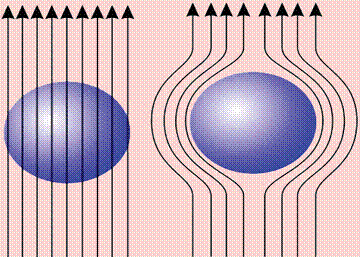





Published on Feb 14, 2025
Superconductivity is a phenomenon occurring in certain materials generally at very low temperatures, characterized by exactly zero electrical resistance and the exclusion of the interior magnetic field (the Meissner effect). It was discovered by Heike Kamerlingh Onnes in 1911.
Applying the principle of S uper conductivity in microwave and millimeter-wave (mm-wave) regions, components with superior performance can be fabricated. Major problem during the earlier days was the that the cryogenic burden has been perceived as too great compared to the performance advantage that could be realized.
There were very specialized applications, such as low-noise microwave and mm-wave mixers and detectors, for the highly demanding radio astronomy applications where the performance gained was worth the effort and complexity. With the discovery of high temperature superconductors like copper oxide, rapid progress was made in the field of microwave superconductivity.
According to BCS theory cooper pairs are formed during superconducting state and it is having energy slightly less than the normal electrons.so there exist a superconducting energy gap between normal electrons and cooper pairs. The band gap 'E' related to transition temperature by relation,
E (at t=0K) =3.52*Kb*Tc
Where Kb - Boltzman's constant
Tc - Critical temperature and
3.52 is a constant for ideal superconductor and may vary from 3.2 to 3.6 for most superconductors.
If a microwave or a millimeter wave photon with energy greater than superconducting energy gap incident on a sample and is absorbed by the cooper pair, it will be broken with two normal electron created above the energy gap and zero resistance property is lost by material. This property is shown in fig below. For ideal with a transition temperature of Tc = 1K, the frequency of the mm wave photon with energy equal to superconducting energy gap at T=0K would be about 73GHz. For practical superconductors the photon energy corresponding to energy gap would scale with Tc. For niobium (Tc=9.2K) the most common material in LTS devices and circuits, the frequency of radiation corresponding to energy gap is about 670GHz.
The zero resistance property of the superconductor is true for dc (f=0). For finite frequencies there are finite but usually very small electrical losses. The origin of these losses at non zero frequency is due to the presence of two type of charge carriers in the superconductor. Although cooper pairs move without resistance, the carriers in normal state, those above energy gap behave as electrons in normal conductor. As long as the operating frequency is below energy gap the equivalent circuit for the superconductor is simply the parallel combination of resistor and inductor, where resistor indicate normal electrons and inductor the cooper pairs. These two carriers contribute separately to the screening of fields.
The characteristic decay length of fields into a super conductor as determined by cooper pair current is superconducting penetration depth. The penetration depth get larger with increased temperature but only slightly close to Tc
The Meissner effect (also known as the Meissner-Ochsenfeld effect) is the expulsion of a magnetic field from a superconductor. Walther Meissner and Robert Ochsenfeld discovered the phenomenon in 1933 by measuring the magnetic field distribution outside tin and lead samples. The samples, in the presence of an applied magnetic field, were cooled below what is called their superconducting transition temperature. Below the transition temperature the samples cancelled all magnetic field inside, which means they became perfectly diamagnetic. They detected this effect only indirectly; because the magnetic flux is conserved by a superconductor, when the interior field decreased the exterior field increased.

Fig2: meissner effect
The meissner experiment demonstrated for the first time that superconductors were more than just perfect conductors and provided a uniquely defining property of the superconducting state. In fig2 shown the first one represents the passing of magnetic field when T>Tc and second one shows meissner effect at T <Tc.
The major problem associated with superconductivity in earlier days was the cryogenic burden or the difficulty in maintaining temperature below the critical temperature. High-temperature superconductors (abbreviated high-Tc or HTS) are materials that have a superconducting transition temperature (Tc) above 30 K, which was thought (1960-1980) to be the highest theoretically allowed Tc. The first high-Tc superconductor was discovered in 1986 by Karl Müller and Johannes Bednorz, for which they were awarded the Nobel Prize in Physics in 1987. The interest towards superconductivity greatly increased after the discovery in 1986 of a class of copper oxide material that shows superconductivity at temperature near 40K.Rapid progress was made and the critical temperature pushed to approximately 90-120K for these oxide-based high temperature superconductors.
Later hts was discovered in other materials like Lanthanum based cuprate perovskite material with transition temperature of 35K, yttrium based YBCO with transition temperature of 92K which was important because liquid nitrogen could then be used as a refrigerant. Later highest temperature superconductor was a ceramic material consisting of thallium, mercury, copper, barium, calcium, and oxygen, with Tc=138 K ,iron based family of superconductor, bismuth strontium calcium oxide or BSSCO with Tc=107K etc.
| Are you interested in this topic.Then mail to us immediately to get the full report.
email :- contactv2@gmail.com |